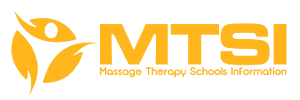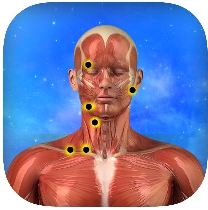Massage Therapy, this article will help you visualize how day to day will be in massage school and what will be expected out of you if you want to go on to become a licensed massage therapists.
We will cover topics like the setting in a classroom, the setting in a hands-on clinic, the number of students per class, the study materials involved, duration of classes as well as the overall program, the exams involved and so forth.
Every state has its own criteria based on which it accredits the different massage therapy schools.
Thus, when you enrol in a school, your chosen program will train you in the courses that qualify you to train as a massage therapist or bodyworker
Most state laws need aspirants to have completed their high school education and be at least 16 years of age.
The duration of the training programs, curriculum, modalities.
And the courses you take will also depend on the regulations of your state.
The Subject Matter Covered in Massage School
The courses in a massage therapy school include both theoretical and practical approaches.
Aside from the fundamentals, you will take advanced training according to the one or more modalities you have chosen to study.
Such as Swedish massage, sports massage, trigger point massage, Shiatsu and so on.
Theoretical Training: This section of your training will include the basic principles of massage healing along with an in-depth study of the human anatomy, physiology, pathology and kinesiology.
You will also understand the history and theory behind the techniques you learn along with the ethics of the practice and your expected behaviour and attitude towards the patient.
Some schools might also train you in the business, licensing and accounting the aspect of massage therapy.
This training can especially benefit you if you intend to set up your own practice.
Most importantly, you will learn about the patient conditions under.
Which massage therapy cannot be given and the precautions you must take.
MIST – What is the Atmosphere Like Day to Day in a Massage Therapy School?
As mandated by your state, you will also learn about the rules and regulations applicable to massage therapy.
Practical Training: This section includes the hands-on approach of massage therapy.
You will learn how to apply the theoretical knowledge you have gained and balance it with manual skills.
Most classes involve students practising skills on one another.
In this way, students not only understand how to manipulate muscles and ligaments but they also learn what the experience of massage healing actually feels like.
These courses also teach students the value of non-invasive healing, how to maintain hygiene and above all, how to take care of themselves.
If mandated by the laws of your state, you’ll also learn CPR or Cardiopulmonary Resuscitation.
Aspiring massage therapists learn how to design the techniques they use according to the specific needs of the patients they treat.
You will understand how to combine different techniques, if needed, to help your patient.
In this way, you can create your own unique approach.
Modalities Offered by Massage Therapy Schools
In today’s times, there are more than 80 modalities that students can specialize in; and most schools offer 4 to 10 techniques.
As you progress in your career, you could develop your expertise in at least 5 specialities.
Some of these include:
- Reflexology – Therapy that targets the hands, feet and ears
- Tuina – Chinese technique
- Shiatsu – A kind of acupressure
- Chinese Meridian Therapy – Developed around the meridians of the body
- Trigger Point Therapy – Targets the knots or tightened tissues
- Indian Head Massage
- Feldenkrais – Developed by Moshe Feldenkrais on the basis of physics, neurology and physiology
- Swedish Massage – Technique using lengthwise strokes
- Deep-tissue massage – Technique using deeper strokes
- Rolfing
- Sports Massage – Technique directed at sports injuries and healing overused and strained muscles in athletes
- Alexander Technique
- Stone Therapy – Technique using Hot or Cold Stones
- Prenatal and Postnatal Massage
- Infant Massage
- Chair Massage
- Geriatric Massage
- Myofascial Release
Hours You Need to Complete While in School
NCBTMB Mandatory Hours: Before you can take the certification exams held by the NCBTMB.
You will be completing the required number of hours such as:
- 750 hours of theoretical training at a school, that has the approval of the NCBTMB or the state where you live.
- This training must be in the main modality you have chosen to specialize in.
- 250 hours of practical massage experience that must be carefully documented by an authorized entity.
- 25 hours of volunteer massage work that you can include in the 250 hours of the hands-on massages you give.
The practical hands-on experience you gain must be completed within 6 months of completing your graduation from an accredited school.
Duration in Schools: Different states might have their own requirements regarding the study hours you need to put in.
These can vary from a minimum of 330 hours up to 1,000 hours.
As for the duration.
You will be devoted to massage therapy school; this can depend on the program you have chosen.
For instance, if you have chosen a degree program, it could take you three years to complete.
In other cases, the program might offer you a year’s training in theoretical training and an added 6 months in practical training.
Programs can be either full-time or part-time and accordingly, you can complete your training in a few months or longer periods.
The school you study at might also require you to provide massage sessions to the faculty or students within the school at reduced rates so you can add up the required hands-on hours.
Online Course Duration: In case you have chosen to study massage therapy by way of an online school.
You can learn the technical concepts and other in-depth knowledge according to your convenience.
However, you will still need to put in the required practical experience hours and have them substantiated so you can take the NCBTMB exams.
Setting in a Classroom in a Hands-on Clinic
While you will be receiving the technical part of your training in a typical classroom.
The practical training hours are conducted in a lab.
Your instructors are likely to be well-experienced professionals themselves that have been practising for a specific number of hours as mandated by the state where they are teaching.
There are usually 14 to 20 students in every bodywork class training under a single instructor.
Some schools prefer to restrict the number of students to 8 or 10 per instructor.
Duration of the Classes: Different schools have their own time frames for conducting classes.
But you can expect to attend 2 classes of an hour each in technical training and 2 and a half hours of hands-on training, every day.
If you opt for more intensive courses, your study hours can extend up to 10 hours a day.
Again, depending on the school and program you have chosen.
You’ll have to document up to 40 hours of performing massage therapy and around 10 hours of receiving it from a fellow student.
Giving Treatment: As you practice on your fellow students.
Your instructor will first demonstrate and then guide you on the nuances of giving treatment.
You will learn your way around the muscular-skeleton system of your patient and take essential lessons in body mechanics.
Effective Communication and Ethical Factors: You will learn how to communicate effectively with the patient, set him/her at ease and create a relaxing ambiance conducive to healing.
Also, develop an understanding of the areas that need treatment.
Massage Therapy
You should be able to develop a good judgment of the patient’s likes and dislikes and comfort zones.
Accordingly, you will be able to customize the treatment to suit his/her needs.
Your instructor will also train you on the ethics of giving treatment and respecting client privacy including draping methods.
Tools and Equipment: Your instructor will also guide you on the tools you’ll need to use such as bolsters, special massage tables and chairs, baths to be used for hydrotherapy, the application of heating and cooling pads during therapy, among others.
Also, learn about the oils and lotions you will need to use when giving treatment.
Self Care: Giving massage healing involves strength, stamina and dexterity.
An essential part of your training includes techniques by which you can avoid fatigue to yourself.
Not only will your instructors help you will this training.
But they will also assist you in putting together an impressive resume and setting up appointments with local agencies and other employers where you can work after graduating at an entry-level position (at least they should).
Guest Workshops: Many schools organize workshops for students that have completed their training.
Guests from a wide demographic range are invited and students are asked to work on them.
This is a good way of getting constructive feedback and getting a feel for working with real clients with actual complaints.
Expected Examination Procedures
According to the laws of your state, you’ll sit for the National Certification Examination for Therapeutic Massage (NCETM) or the National Certification Examination for Therapeutic Massage and Bodywork (NCEMTB) held by the NCBTMB.
While 80% of the states follow the NCBTMB examination system, others might need you to take the Massage & Bodywork Licensing Examination (MBLEx) held by the Federation of State Massage Therapy Boards (FSMTB).
In addition, you need to retake the exam every four years for recertification.
As an alternative to taking the exam, you can go for 48 hours of continuing education units along with 200 hours a massage therapy.
You should be able to show that you have completed these hours in the 4-year duration.
Thus, it is essential that you conduct the necessary enquiries.
This will allow you know what the requirements in your state are and you can choose your school accordingly.








Leave a Reply